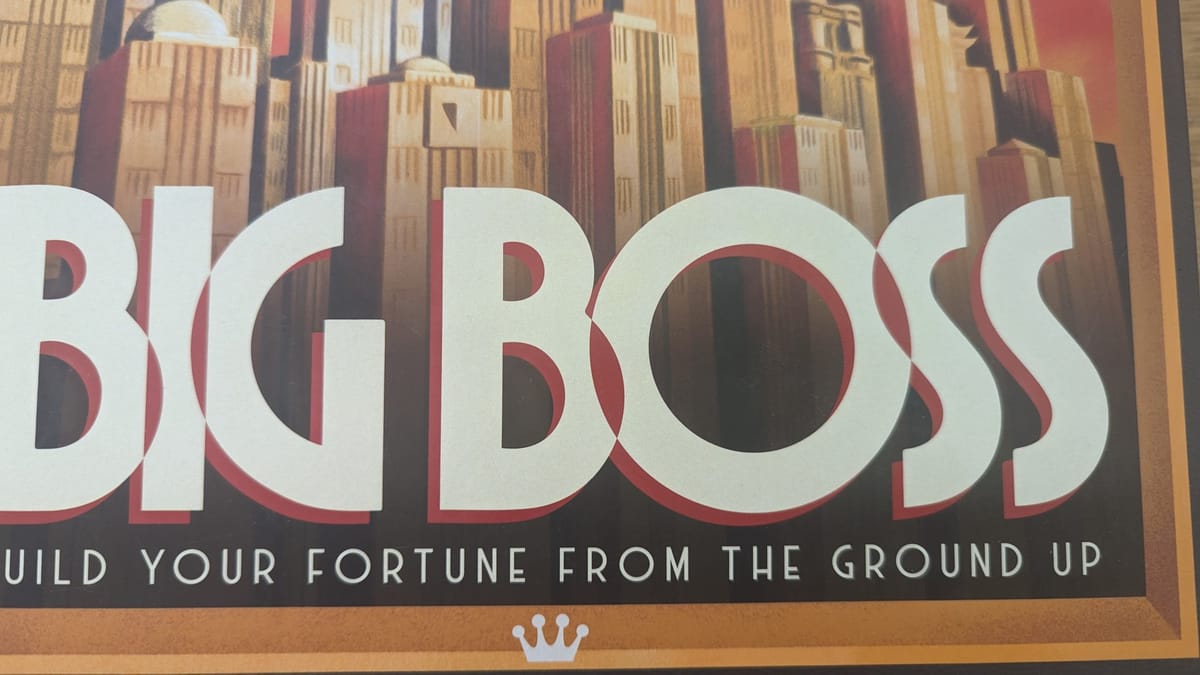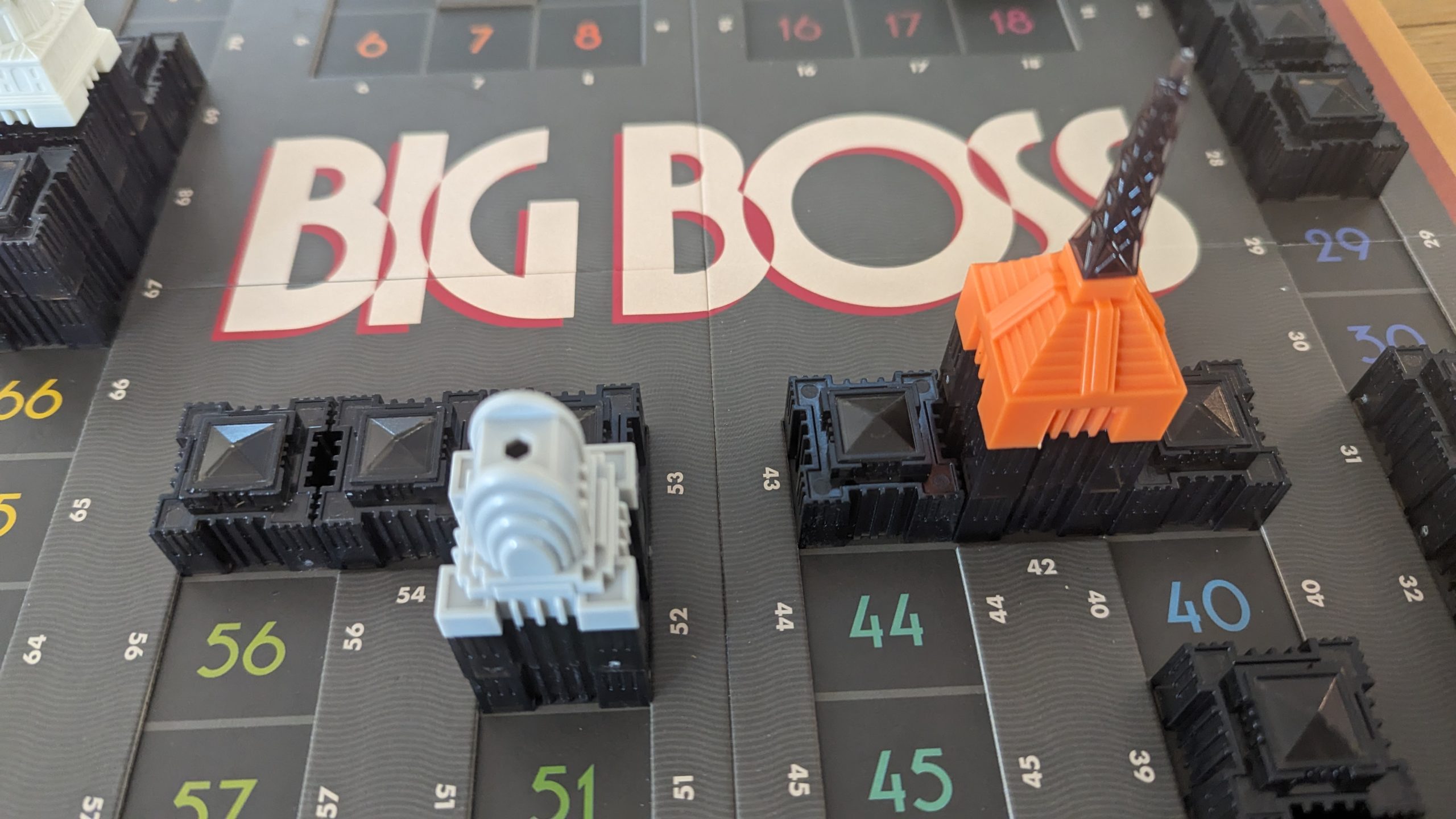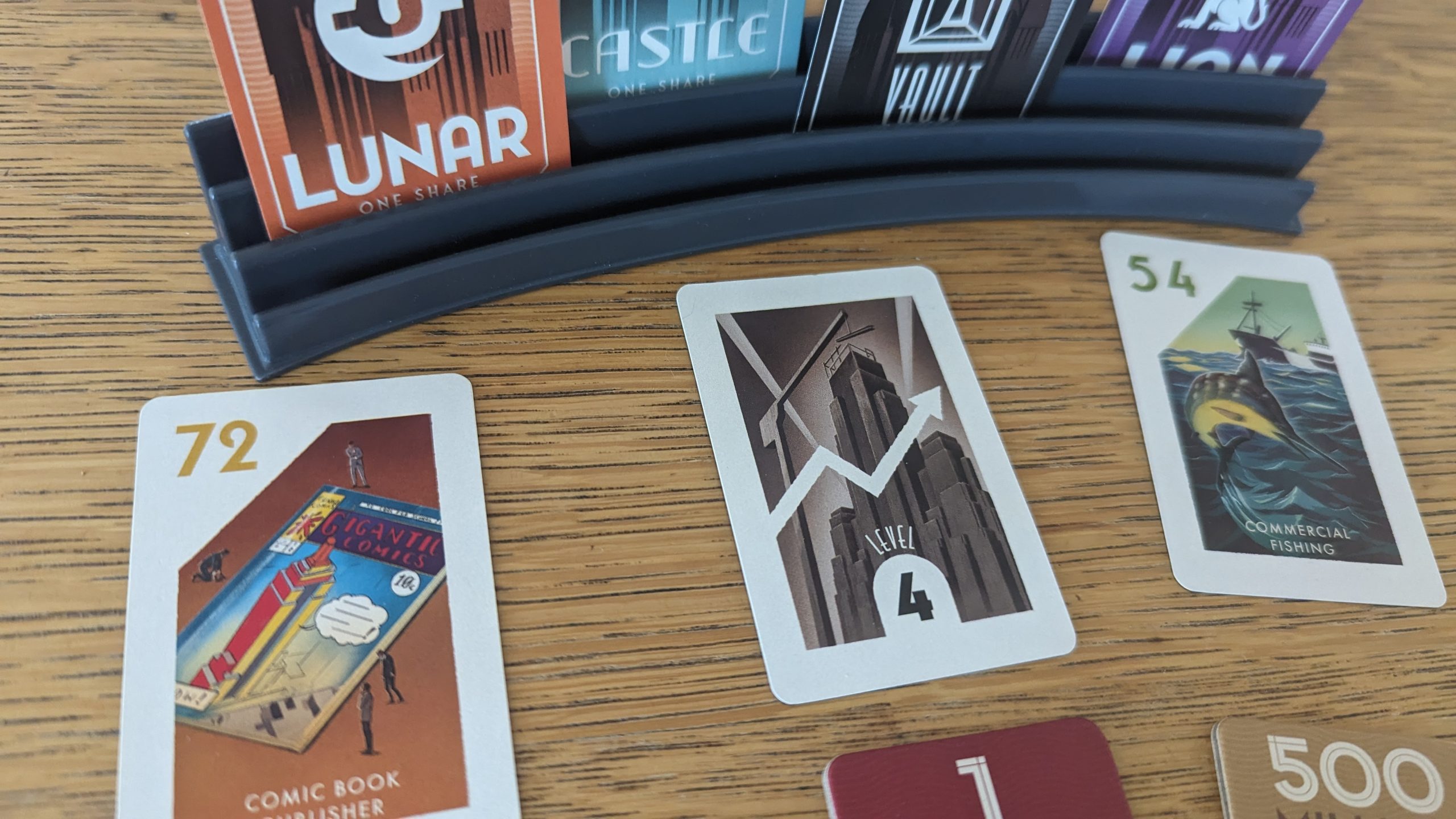
Playing Big Boss for review has been the board game version of going to colonial Williamsburg or any other historical reenactment. I’ve been helping Mike get plays of the Renegade reprint of its ancestor Acquire in for review, so I’ve gotten to really play around with early economic design ethos. It’s rad as hell to get in depth with all the rough edges that existed before we hit modern design, but just like any historical site, one of my biggest takeaways is how happy I am to have ready access to recent advancements.

Not that Acquire was all that complicated, but Big Boss has got to be the simplest stock game I’ve ever played: on your turn, you either buy a card or play a card. When you buy a card, you grab the top card of the deck and add it to your hand. Most cards relate to a number on the board, but some add a level to existing buildings, easy peasy. However, playing a card has a few more steps. If the number you play is out on its own and there’s an unfounded company left, you vomit a bunch of plastic onto the board to found a company. Playing a card adjacent to or already part of an existing company adds a building on that number and bumps its share price up by the level building you just added, taking money from the bank equal to the new share price. In theory, this gives players a steady stream of income that prevents them from having no possible actions, as will happen to worse performing players in Acquire, where any combination of unlucky draws and bad investments can lead to half the table sitting on their hands with no good tile plays and no money to buy stocks. In practice, since every play on a high value company is the same as a maxed out stock, performance winds up being tied to the luck of the draw more than good plays. Add in the absolute slog of having to spend a whole turn buying a card and nothing else in order to be able to interact with the game, and even doing well in Big Boss feels worse than getting absolutely bodied in Acquire.

I’d like to bring up some highlights to contrast how I’ve been down on Big Boss so far, but the rest of the box is either hit or miss, mostly miss. The rulebook contains two variants, one of which is almost pure luck, and the other with an obvious best strategy, so while you’ve got a choice, it’s between being tased and pepper sprayed; both are miserable experiences I’d rather not repeat. The biggest potential upside is the toy factor of making big ol’ stacks of the chunky plastic buildings, but that tactile joy is mollified when you look at the sheer amount of future trash in the box and are reminded of Funko’s other corporate actions, like manufacturing an absurd amount of their figurines so they can bury them in a landfill and claim the loss against their taxes. I was seriously hoping that Big Boss would wind up being another Funko hidden gem like Pan Am, but this ain’t it.

The mechanical shortcomings would be forgivable if it weren’t for a terminal case of Munchkin syndrome. Just like the infamous card game, it wildly overstays its welcome, only Big Boss drags out the endgame even with people playing suboptimally to wrap things up quicker. The main culprit here is the end game condition: emptying the 90-something supply of buildings. Basic spitball math can tell you that, since only every other turn actually involves playing a building, you’re looking at a runtime similar to Villeneuve’s Dune. Not that that’s necessarily a bad thing, but if I’m spending that long playing a single game it’s got to provide some crunch that simply doesn’t exist in this box. Instead, the long playtime only serves to highlight how paper thin the provided decision space really is.
Big Boss
Below Average
I hate to spend a whole review trashing a game because it isn't as good as another, but I feel like Funko walked into this one by putting out Acquire's strictly worse little brother months apart from the Renegade reprint. Some older games should stay retired, and Big Boss belongs in a museum.
Pros
- Toy factor of stacking the building pieces
- Gameplay is simple enough that nobody is going to get overwhelmed
Cons
- There isn't enough game here to justify the time it requires
- More environmentally conscious players will be put off by the sheer volume of plastic that could have easily been wood or cardboard
